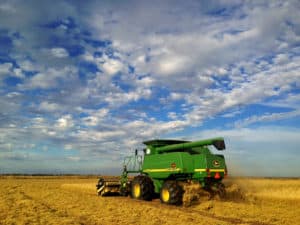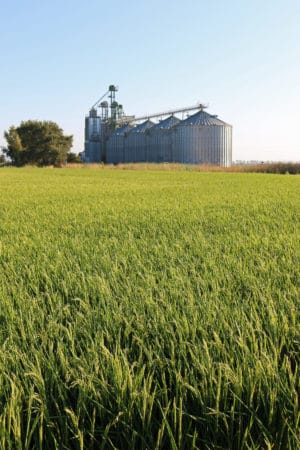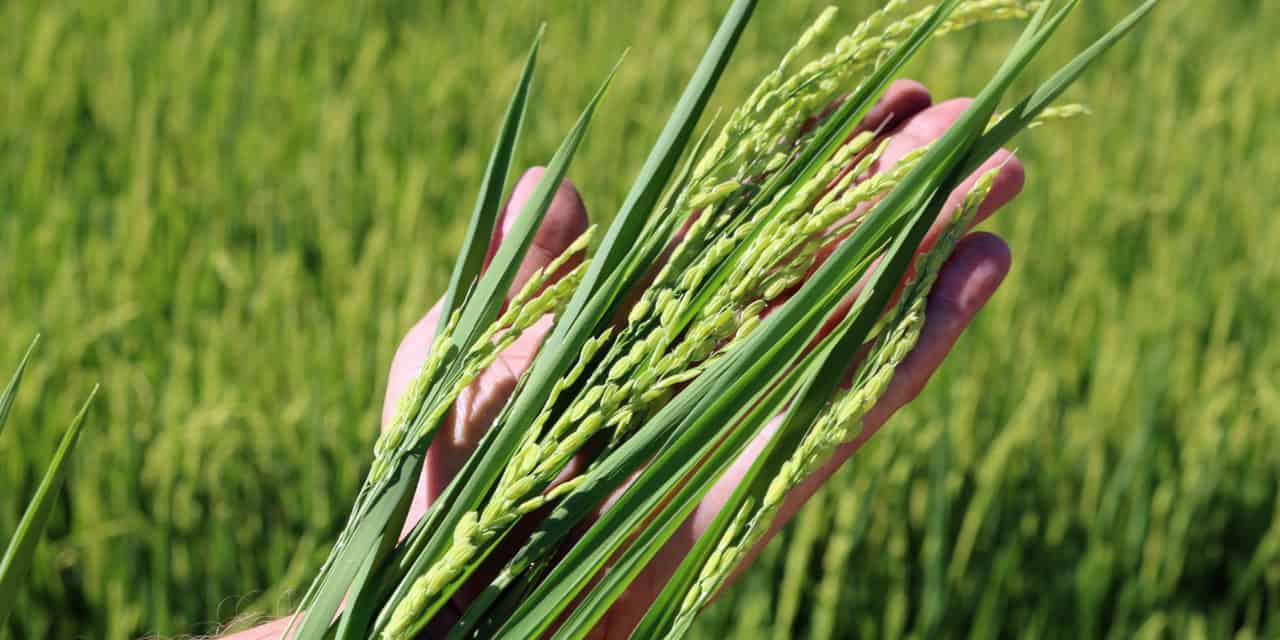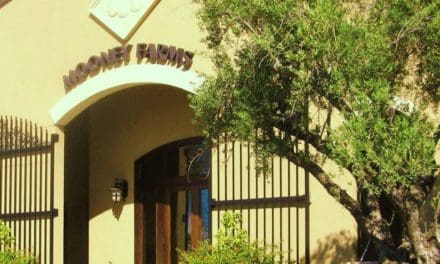RICE – A TINY GRAIN WITH AN IMPRESSIVE IMPACT
By Debra Hasbrouck
Photos and Facts Courtesy of California Rice Commission
Rice is an amazing food. It’s delicious, nutritious and remarkably versatile in the kitchen. Throughout history this simple, little grain has been a dietary staple for much of the world. In addition to its intrinsic food value, rice production makes a significant contribution to the economic health of California, while simultaneously improving the environment.
Over ninety-five percent of California rice is grown in the Sacramento Valley, utilizing areas with clay  soils that are not well suited for other crops. With its ability to retain water, this land is ideal for growing rice. The predominant variety farmed in the Sacramento Valley is medium-grain Calrose rice. Some short-grain rice is also grown here – in fact if you eat sushi rice, it was probably grown in the Sacramento Valley.
soils that are not well suited for other crops. With its ability to retain water, this land is ideal for growing rice. The predominant variety farmed in the Sacramento Valley is medium-grain Calrose rice. Some short-grain rice is also grown here – in fact if you eat sushi rice, it was probably grown in the Sacramento Valley.
Randall Mutters, Butte County Farm Advisor, reported that farmers in the Sacramento Valley planted 535,000 acres of rice in 2013. “Butte County had 98,445 acres planted in 2013,” he said, “with an average yield of 8,830 sacs of rice per acre.” Each sack contains approximately 100 pounds of rough (with the hull intact), dry rice. “In 2013 the farm-gate value of rice produced valley-wide was just under one billion dollars, with Butte County generating over two-hundred million of that total,” he added. That’s great news for the local economy and employment in the region.
In addition to its positive economic impact, the farming of this nutritious crop has reaped an environmental benefit – replacing wetlands that were lost due to development. Rice farms now act as “surrogate wetlands,” providing necessary habitat for migrating waterfowl as well as being home to over two hundred species of wildlife. On their website, the California Rice Commission (CRC) estimates that  without rice farming, it would cost about $2 billion to create the wetland habitat and another $35 million annually for maintenance. According to Jim Morris of the CRC, “Rice fields in the Sacramento Valley support approximately 300,000 shorebirds and over seven million waterfowl in the Pacific Flyway.”
without rice farming, it would cost about $2 billion to create the wetland habitat and another $35 million annually for maintenance. According to Jim Morris of the CRC, “Rice fields in the Sacramento Valley support approximately 300,000 shorebirds and over seven million waterfowl in the Pacific Flyway.”
In early spring, rice fields are laser-leveled to help maintain efficiency and enhance water conservation. Small furrows are made and the prepared fields are filled with water; a consistent shallow depth of about five inches is all that these aquatic plants need to thrive. Jim Morris noted that there are misconceptions about water use. “It takes about the same amount of water to grow a serving of rice as it does oranges or broccoli,” he said. In a 2012 report done by the CRC they state, “Compared to thirty years ago, rice farmers are using twenty percent less water to grow almost thirty percent more rice.”
One of the most unique things about rice production is the way that it’s planted. Almost all rice in  California is water-seeded by airplane. To prepare the seeds, they are soaked for 24 hours to start
California is water-seeded by airplane. To prepare the seeds, they are soaked for 24 hours to start
the germination process and to increase their weight with water absorption. After draining, the heavy seeds are spread over the fields from a plane going about 100 miles per hour. The weighted, germinated seeds sink to the bottom where they begin the four month progression to maturity.
At the end of summer, the fields are drained and allowed to dry.
Specialized machinery is used to harvest the ripe grain in order to maintain a premium product. The crop is then shipped to facilities where it is dried and the rough rice is stored at 14 percent moisture. When the rice is sold, it is sent to the miller for husk removal and polishing. The California Rice Commission, which is fully funded by farmers, has annual GMO testing done to ensure the quality of their rice. These test results show that California rice is GMO free.
In the past, the rice stubble left in the fields was burned to eliminate the straw and control disease. Due to air quality concerns, most stubble is currently worked into the soil and covered with shallow water over the winter to help promote decomposition. The flooded fields create an ideal environment for migrating waterfowl, giving them a place to feed and rest.
The CRC website at www.calrice.org has some great information on wildlife species with maps, guides and some amazing photos. There are many little back roads surrounding Richvale (fifteen miles south of Chico) where wildlife and waterfowl viewing can be spectacular. Bald eagles, as well as other raptors, are also a common sight. If taking pictures from a car, Jim Morris recommends trying to get a few shots through an open window before exiting your vehicle; the birds may decide to take flight when you open the door. Remember it’s easy to be distracted by hundreds of snow geese, so stay attentive if you’re driving. There are some wildlife refuges in the area, but be aware that much of the land is private property.
As a food, rice is nutritious, delicious and versatile. For a hearty dinner you can bake a chicken and rice casserole – or pair rice with brown gravy and pork chops. Simply adding melted butter or fresh, chopped tomatoes to cooked rice with a little salt and pepper can create a tasty side dish. Rice can even be used in place of noodles when making chicken soup (especially yummy with a little kick of soy sauce).
It truly is remarkable when you consider the tremendous amount of value that comes from the production of this simple grain – not only as a dietary staple, but as a boost to our local economy and a key factor in the restoration of critical habitat for a variety of wildlife.












